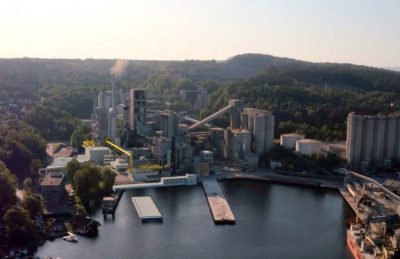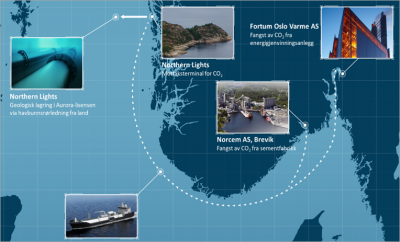They’re billing it as “the biggest climate project in Norwegian industry ever,” but the government’s long-awaited carbon capture, transport and storage plan could have been even bigger. Carbon emissions may now only be captured at the Norcem cement plant near Porsgrunn, meaning carbon capture at the Fortum recycling plant in Oslo will have to wait for more needed financial support.

There was broad public support for Fortum’s participation as well and not only in Oslo, where carbon capture at Fortum’s plant at Klemetsrud on the city’s southeast side would cut the capital’s carbon emissions by as much as 14 percent. National employers’ organization NHO, Norway’s largest trade union federation LO, the country’s national industrial association Norsk industri, Oslo’s city government and opposition parties in Parliament all wanted the government to include both Norcem and Fortum in the project now known as Langskip (literally, “Longship” like the old Viking ships).
The government opted instead to follow consultants’ advice to start out just with Norcem, fearing the huge costs of the project couldn’t otherwise be justified economically. It can still be possible for Fortum to join in at a later date, but only after it’s raised some funding support of its own.
“In order for the project to be a climate success in the future, other countries have to put its technology into use,” Prime Minister Erna Solberg said at her government’s press conference announcing the carbon capture plans on Monday. It simply seemed most prudent for the government to propose launching the project first at Norcem, which is located in the heart of Norway’s historic industrial base at Brevik, just outside Porsgrunn.

Capturing Norcem’s carbon emissions can prevent 400,000 tons of carbon from entering the atmosphere. Fortum’s emissions are about the same, but Norcem will get all the state’s initial support in the government’s proposal to Parliament. The project involves capturing carbon at the plant in Brevik, transporting it by ship to a terminal at Øygarden on the West Coast, and then storing it deep under the North Sea at the Aurora field.
The storage project has been called Northern Lights, backed by oil companies Equinor, Shell and Total. The capture, transport and storage collectively is the first of its kind in Europe and has received EU approval for all the state support in involves.
Total costs are estimated at around NOK 25.1 billion, with the state putting up nearly NOK 17 billion. Another NOK 3 billion may be made available for Fortum to eventually join in, but only, under the government’s proposal, after Fortum raises around NOK 3.8 billion of its own funding from other sources, including the City of Oslo, the EU or others. Jannicke Gerner Bjerkås, director of carbon capture and storage efforts at Fortum, told Norwegian Broadcasting (NRK) on Monday that Fortum had hoped for the same amount of support as Norcem, but nonetheless has been promised “a concrete and considerable amount if we manage to finance the rest. We’re ready to do that.”
There was jubilation in Brevik, meanwhile, and shares in one of the companies involved, Aker Carbon Capture, shot up on the news. It was recently spun off from Aker Solutions, controlled by Norwegian industrialist Kjell Inge Røkke, and will deliver capture- and chilling technology to the cement factory in Brevik.
Prime Minister Solberg was most encouraged by the prospects the entire project has for development of new technology and new job creation. It’s almost as though Norway has made its fortunes on developing an oil industry and now hopes to make new fortunes on cleaning up after it.
“The project will cut emissions and create a demand for new technology and, therefore, new jobs,” Solberg stated. She views it as a major step in years of efforts, and no small amount of hyperbole, to Norway’s economy less reliant on oil, “make Norway greener” and, not least, meet climate goals.
“This is the biggest climate project in Norwegian industry ever,” claimed Oil Minister Tina Bru. “We’ll be cutting emissions, but not development.” Climate and Environment Minister Sveinung Rotevatn was also positive, claiming that “not all emissions can be cut by using renewable energy.” Norway also has a strong professional base of expertise, Rotevatn said, in carbon capture, transport and storage.
Now it’s up to Parliament to respond to the plans, and perhaps tweak them a bit to bring Fortum into the fold and cut Oslo’s emissions. The project is up for debate this autumn after Parliament opens in early October.
NewsInEnglish.no/Nina Berglund

